News archive for 2015
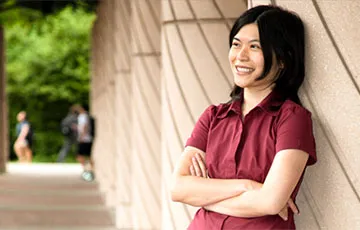
Tue, 12/22/2015 | UW BioEngineering
Suzie Pun named a 2015 National Academy of Inventors (NAI) Fellow
Suzie Pun was recently named a 2015 National Academy of Inventors (NAI) Fellow the UW Bioengineering Robert F. Rushmer Professor of Bioengineering, Dr. Pun’s research focuses on developing bioinspired materials for medical applications. Recently, bioengineers in Dr. Pun’s research group, along with collaborators from UW Emergency Medicine and Chemical Engineering, developed PolySTAT, an injectable polymer that helps strengthen blood clots to stop uncontrolled bleeding.

Tue, 12/15/2015 | UW Today
Fuel economy improvements in US climate commitment on par with 1970s gainsTo hold up its end of the landmark climate deal signed in Paris last week, the U.S. will need to make cars and trucks of the future far more fuel efficient — to the equivalent of 54 mpg by 2025. “It’s within the realm of what we’ve done before, just not recently. It’s asking for a return to the rate of innovation the industry was able to deliver in the 1970s and 1980s. But it’s not beyond that,” MacKenzie said lead author Don MacKenzie, UW assistant professor of civil and environmental engineering.
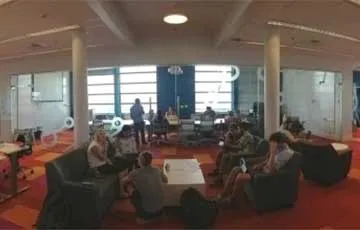
Mon, 12/14/2015 | UW Today
UW Board of Regents approves new Master of Science in Data Science for professionalsThe new program is a collaboration between Human Centered Design & Engineering, Computer Science & Engineering, the eScience Institute, the iSchool, and additional UW science and math departments. The 45-credit program, launching in fall 2016, will be offered at the UW Seattle campus, with full- and part-time options available in the evening to suit the schedules of working professionals. Students will gain advanced technical expertise in managing, modeling and visualizing big data to meet the growing needs of industry, government, nonprofits and research institutions.
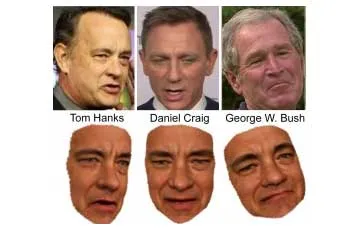
Mon, 12/07/2015 | UW Today
What makes Tom Hanks look like Tom Hanks?CSE researchers show it’s possible for machine learning algorithms to capture a "persona" and create a digital model of a well-photographed person.

Tue, 12/01/2015 | UW Today
UW roboticists learn how to teach robots from babies
A collaboration between UW computer scientists and developmental psychologists has shown that robots can "learn" much like kids — by amassing data through exploration, watching a human perform a task, and determining how best to carry out that task on its own. "You can look at this as a first step in building robots that can learn from humans in the same way that infants learn from humans," said senior author Rajesh Rao, a UW professor of computer science and engineering.
Rao's team used research on babies to develop machine learning algorithms that allow a robot to explore how its own actions result in different outcomes.
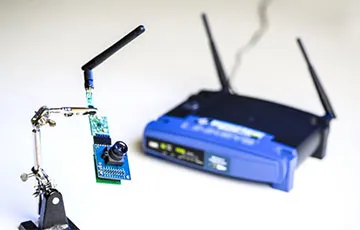
Wed, 11/18/2015 | UW Today
Popular Science names ‘Power Over Wi-Fi’ one of the year’s game-changing technologies
A team of UW computer science and electrical engineers have developed a novel technology that uses a Wi-Fi router — a source of ubiquitous but untapped energy in indoor environments — to power devices.
The Power Over Wi-Fi (PoWiFi) system is one of the most innovative and game-changing technologies of the year, according to Popular Science, which included it in the magazine’s annual “Best of What’s New 2015” awards announced Wednesday.
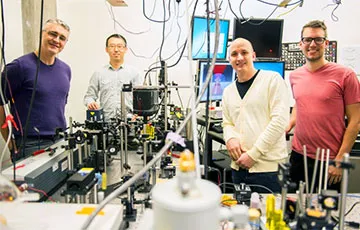
Mon, 11/16/2015 | UW Today
UW team refrigerates liquids with a laser for the first time
MSE assistant professor Peter Pauzauskie and his team are the first to solve a decades-old puzzle — figuring out how to make a laser refrigerate water and other liquids under real-world conditions.
Using an infrared laser to cool water by about 36 °F, they demonstrated a hydrothermal process to manufacture a well-known laser crystal for laser refrigeration applications in a faster, inexpensive, and scalable way. They also designed an instrument that uses a laser trap to "hold" a single nanocrystal and illuminate it. The instrument projects the particle’s "shadow" to allow observation of minute changes in its motion due to cooling.
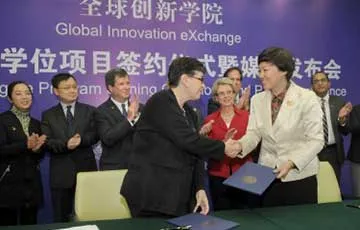
Mon, 11/09/2015 | UW Today
UW and Tsinghua University announce dual degree program through the Global Innovation Exchange
The first dual degree program to be announced through GIX - Global Innovation Exchange is a new model of learning designed to fuel innovation and foster collaborations on a worldwide scale. The UW and Tsinghua University agreed to launch an integrated dual degree program through GIX that combines project-based learning in design thinking, technology development and entrepreneurship.
"Innovation requires you to understand users so you build the right thing, know enough about the technology to prototype it and demonstrate it, and know how to pitch it and convey its importance. This is going to be an intensive, integrated educational program in all these areas," said Shwetak Patel, chief technology officer for GIX and UW's Washington Research Foundation Entrepreneurship Endowed Professor in Computer Science & Engineering and Electrical Engineering.
The UW MSTI is currently under review by the UW Graduate School, which must approve all new degree programs.
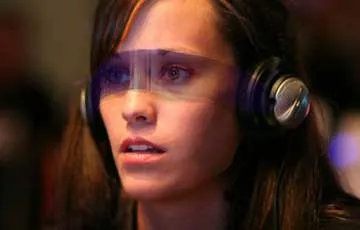
Tue, 11/03/2015 | UW Today
Life, enhanced: UW professors study legal, social complexities of an augmented reality futureResearchers at the UW’s Tech Policy Lab charge designers of future augmented reality systems with making them adaptable to change, resistant to hacking, and responsive to the needs of diverse users. Augmented reality promises systems that can aid people with mobility or other limitations. But augmented reality will also bring challenges for law, public policy, and privacy, especially pertaining to how information is collected and displayed. Issues regarding surveillance and privacy, free speech, safety, intellectual property and distraction — as well as potential discrimination — are bound to follow.
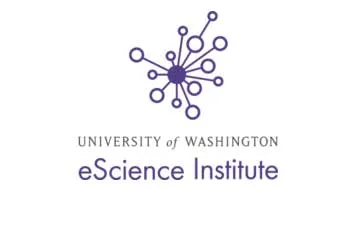
Mon, 11/02/2015
UW to co-lead West Coast ‘Big Data brain trust’ for NSFThe National Science Foundation selected the UW, along with UC San Diego and Berkeley, to co-lead one of four Big Data Regional Innovation Hubs around the country. The ability to access, analyze and draw insights from massive amounts of data is already driving innovation in fields from medicine and manufacturing to the way cities are managed. To accelerate this emerging field, the NSF is establishing four “Big Data brain trusts” to catalyze new collaborations among university researchers, tech companies, national labs, local and state government and non-profits.
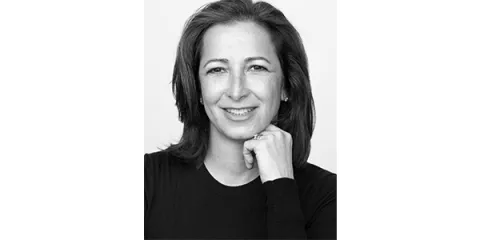
Thu, 10/29/2015 | UW Today
Nov. 5 bioengineering lecture focuses on 'Engineering Personalized Medicine'
We have personal trainers and tailored suits. Why don't we have personalized medicine? That question - and the prospects for stem-cell-based treatments that reverse disease and repair damage rather than simply addressing symptoms - will be the focus of UW Bioengineering's 2015 Allan S. Hoffman Lecture on Nov. 5. Molly S. Shoichet, a University of Toronto chemical engineering and applied chemistry university professor who specializes in tissue engineering at the Institute of Biomaterials and Biomedical Engineering, will deliver the lecture entitled "Engineering Personalized Medicine" at 4 p.m. at Kane Hall's Walker-Ames Room, with a reception to follow.
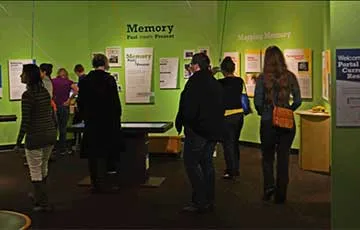
Thu, 10/29/2015 | EE News
Pacific Science Center Exhibit Features Research by EE Professor Howard Chizeck
A new Pacific Science Center exhibit features the work of EE Professor Howard Chizeck and students in the BioRobotics Lab. The exhibit, Memory: Past Meets Present, focuses on how the brain retains information on repetitive actions performed by the body. The exhibit runs through March 6, 2016.
One panel of the exhibit highlights the Deep Brain Stimulator (DBS) for essential tremor project, led by EE Ph.D. students Jeffrey Herron and Margaret Thompson, aims to build closed-loop DBS systems to improve treatment for people with neurological disorders such as essential tremor.
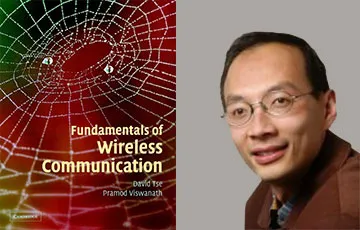
Fri, 10/23/2015 | UW Today
From cell phones to DNA - an exploration of information theoryIn a lecture titled, "The Science of Information: From Pushing Bits over the Air to Assembling the World's Largest Jigsaw Puzzle," Stanford University professor David Tse will focus on how information theory has enabled new technological innovations. The lecture is part of the 2015 Dean Lytle Endowed Lecture Series hosted by the UW’s Department of Electrical Engineering. "While the design of physical systems is based on the laws of physics, the design of communication systems is based on the laws of information theory," said Tse, a professor of electrical engineering. Tse will give a public talk on Monday, Nov. 2, at 3:30 p.m. in the Paul G. Allen Center for Computer Science and Engineering atrium, with a reception to follow. The lecture is free, but advance registration is requested by Friday, Oct. 30.
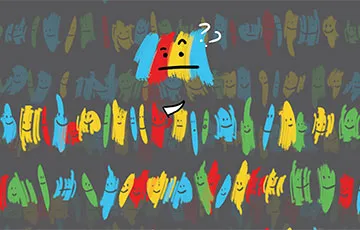
Thu, 10/22/2015 | UW Today
New UW model helps zero in on harmful genetic mutationsA new publicly available tool from UW engineering researchers can better predict which genetic mutations significantly change how genes splice and may warrant increased attention from disease researchers and drug developers. The model is the first to train a machine learning algorithm on vast amounts of genetic data created with synthetic biology techniques. "Some people have variations in a particular gene, but what you really want to know is whether those matter," said lead author Alexander Rosenberg, a UW electrical engineering doctoral student. "This model can help you narrow down the universe — hugely — of the mutations that might be most likely to cause disease."
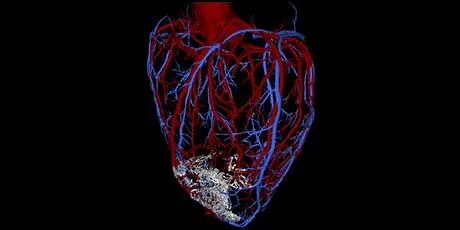
Wed, 10/21/2015 | UW Heath Sciences NewsBeat
$10M award to enable trials for Heart Regeneration Program
Collaborating UW researchers have successfully restored damaged heart muscle of monkeys using heart cells created from human embryonic stem cells. Founded in the research of Dr. Charles Murry, UW professor of bioengineering, pathology and medicine and supported by a $10 million investment from the Washington Research Foundation, the treatment has the potential to restore heart tissue in people who have suffered heart attacks.
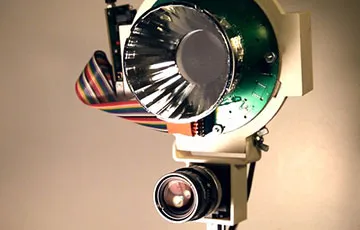
Thu, 10/15/2015 | UW Today
Affordable camera reveals hidden details invisible to the naked eye
An affordable camera technology being developed by the UW engineers and Microsoft Research uses both visible and invisible near-infrared light to "see" beneath surfaces and capture unseen details. Typically used in industrial applications and costing up to tens of thousands of dollars, the "hyperspectral" camera could enable consumers of the future to tell which piece of fruit is perfectly ripe or what's rotting in the fridge. "It's not there yet, but the way this hardware was built you can probably imagine putting it in a mobile phone," said Shwetak Patel, a UW professor of computer science & engineering and electrical engineering. Co-authors include Eric Whitmire, Alex Mariakakis and the late Gaetano Borriello of the UW’s Department of Computer Science & Engineering and T. Scott Saponas, Neel Joshi, Dan Morris, Brian Guenter and Marcel Gavriliu at Microsoft Research.
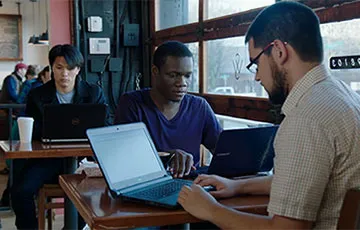
Thu, 10/15/2015 | UW Computer Science & Engineering
CyberWar Threat As internet connections multiply so do points of attack and risks to national securityCSE professor Yoshi Kohno and grad students from the Security and Privacy Research Lab were featured on PBS's NOVA. Starting at minute 29 with the now-famous car hacking research, the program also shows CSE grad students able to use a false wifi hotspot to discover another student's home security login, figure out where he lives, and "break in." Kohno's team, including former CSE PhD students Karl Koscher and Franzi Roesner, now a professor at UW CSE, are shown remotely taking over the brakes of a car in a dramatic illustration of how vulnerable embedded systems in automobiles are to attack. The cafe wifi hacking segment features EE PhD student Tope Oluwafemi and CSE bachelor’s student Tariq Yusuf (both now alumni) using just a laptop and their own wireless hotspot to hack into CSE PhD student Alex Takakuwa’s laptop.
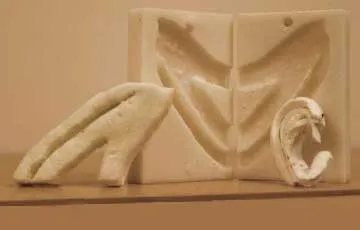
Wed, 09/30/2015 | UW Today
3-D printing techniques help surgeons carve new earsEngineering and UW Medicine researchers used 3-D printing to create a model that feels and acts like rib cartilage for realistic surgical practice. The innovation could open the door for aspiring surgeons to become proficient in the sought-after but challenging procedure.
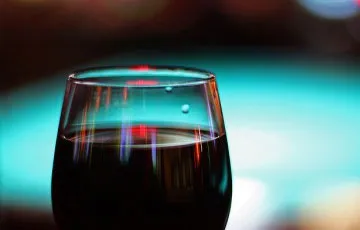
Tue, 09/29/2015 | UW Today
Arsenic found in many U.S. red wines, but health risks depend on total dietTwo studies from EE professor Denise Wilson show red wines containing arsenic levels that exceed the EPA's allowed limit, but health risks depend on other high-arsenic foods in our diets.

Wed, 09/23/2015
UW and Shanghai Jiao Tong University forge international collaboration on smart citiesLooking forward to making Smart Cities a banner program for trans-Pacific collaboration, UW EE and Shanghai Jiao Tong University formed a partnership to improve quality of life through innovation. Smart city innovations use sensors, data analytics, and other technologies to elevate the safety, health, resilience, prosperity, and quality of life in urban areas, where an increasing number of people around the world live. Possible solutions could include sensors showing real-time air pollution data around schools, smart parking apps that cut down on circling and congestion, and GIS mapping technologies to manage water more efficiently.
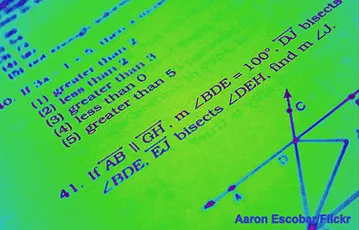
Mon, 09/21/2015 | UW Today
AI system solves SAT geometry questions as well as average human test takerUW CSE researchers collaborated on an artificial intelligence system that can solve SAT geometry questions as well as the average American 11th-grade student, a breakthrough in AI research. GeoS uses computer vision to interpret diagrams, natural language processing to read text, and a geometric solver to achieve 49 percent accuracy on official SAT test questions. If these results were extrapolated to the entire Math SAT test, the computer roughly achieved an SAT score of 500 (out of 800), the average test score for 2015.
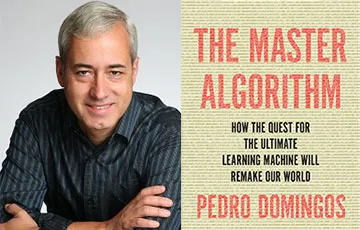
Thu, 09/17/2015 | UW Today
A Q&A with Pedro Domingos: Author of "The Master Algorithm"Pedro Domingos, professor in CSE, is the author of “The Master Algorithm: How the Quest for the Ultimate Learning Machine Will Remake Our World.” In advance of his September 22 talk at Seattle’s Town Hall, he answered a few questions about the book. A popular science romp through one of today’s hottest scientific topics, the book is an essential primer on machine learning. It unveils the deep ideas behind the algorithms that increasingly pick our books, find our dates, filter email, manage investments and run our lives — and what informed consumers and citizens ought to know about them.
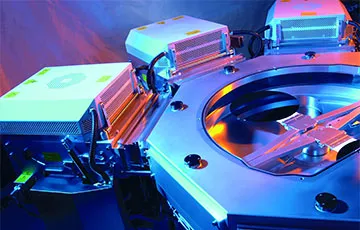
Wed, 09/16/2015 | UW Today
UW labs win $4.5 million NSF nanotechnology infrastructure grantNSF funding will support nanofabrication and molecular analysis for UW researchers, one-person startups and multinational corporations that otherwise can’t affordably or reliably meet their fabrication needs at commercial foundries. The UW and Oregon State University won a $4.5 million grant from the National Science Foundation to advance nanoscale science, engineering and technology research in the Pacific Northwest and support a new network of user sites across the country. The regional partnership was selected as one of 16 sites for a new National Nanotechnology Coordinated Infrastructure (NNCI) program. That network is designed to give researchers from academia, small and large companies and other institutions open access to university facilities with leading-edge fabrication and characterization tools.

Mon, 09/14/2015 | UW Today
UW, city of Seattle join 'Smart Cities' networkThe UW and city of Seattle have joined a national network of university-city partnerships that will work on "smart city" solutions. The MetroLab Network, announced by the White House on Monday, consists of partnerships between research universities with expertise in engineering, robotics and computer science and cities looking to be test beds for 21st century solutions. The partnership aims to marry expertise and knowledge from UW researchers — from engineers inventing new sensors to sociologists studying determinants of poverty to data scientists parsing problems in new ways — and the experience and learned wisdom of employees tackling day-to-day challenges of running a city.
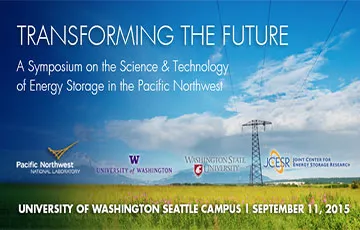
Tue, 09/08/2015 | UW Today
UW hosts Pacific Northwest energy storage symposium on Sept. 11
A more efficient and sustainable energy system hinges on the ability to store energy for when it’s needed most. On September 11, researchers, students, government regulators, energy entrepreneurs, utilities, and industry experts will gather at UW to discuss this topic at Transforming the Future: A Symposium on the Science and Technology of Energy Storage in the Pacific Northwest. The symposium will address energy storage research needs, commercialization opportunities and challenges, and strategies to finance energy storage technology deployment. Symposium sponsors are the UW Clean Energy Institute, Pacific Northwest National Laboratory, Washington State University, and the Joint Center for Energy Storage Research (JCESR).